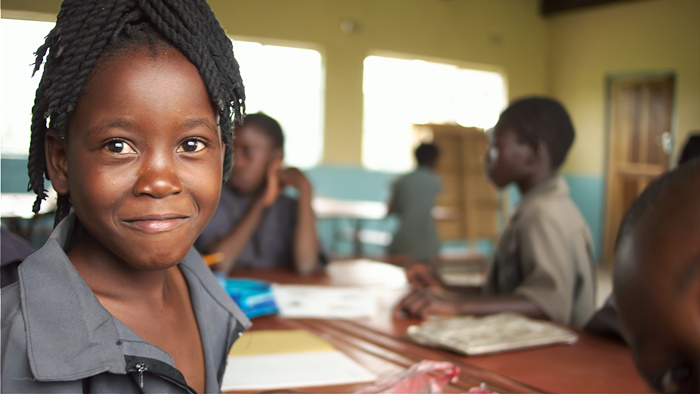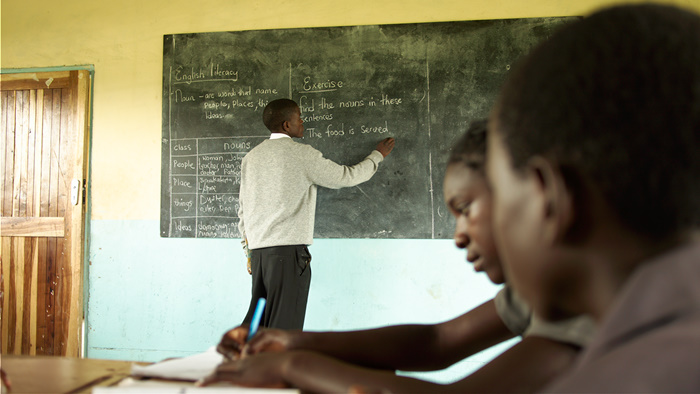
The old schoolhouse is still in use, but for how long can the classes stay there?
We’re just back from a visit to the primary school at Simakakata, a rural community in Kalomo district, Zambia. The school was set up by the community three years ago. Before it began, there was nowhere for the children of the 600 families living in the area to study. The nearest government schools are in Kalomo (7km away), which is simply too far for children as young as six to walk every day.
Simakakata is very poor. Most people here are subsistence farmers, and when they do manage to grow enough extra crops to sell, they are often ripped off by grain merchants and left with no food or money for the winter.
George, the headmaster at Simakakata, has a dream. He wants to create a permanent, government supported school here, with modern classrooms and facilities which will give both the children and adults of Simakakata a chance to gain a basic education. If George’s vision can be accomplished, the entire area will benefit: educated children can earn more money to help raise their families from poverty; primary educated mothers have better cared for chidren; and educated farmers can learn new growing techniques and get a better price for their crops.

Grade 2 children learning maths
It’s estimated that the number of people living with HIV/AIDS in Simakakata is between 15-20%, and many children here – no one really knows how many – are orphans as a result. A good education will significantly reduce the chance that the pupils of Simakakata will contract HIV. There are many other health benefits, infants learn through drama exercises the importance of washing their hands and boiling water before drinking it.
Over the last year, three classrooms have been built at Simakakata, with a fourth underway. As a direct result, the government has sent three new teachers along with text books and learning materials, and the pass rate for Grade 7 pupils has already doubled. 50% of the pupils with a 600 or higher mark in their Grade 7 exams last year were girls.
You can tell how happy the people here are with their school – not only is enrolment up year on year, nearly all the children are wearing uniforms this year. That’s a clear sign that their parents have been convinced to invest what little they have in their children’s schooling, an attitude change that cannot be underestimated.
It’s not enough.

Edwin teaches English to the Grade 7 class in the new classroom block.
Two classes are still being taught in the dirty, dilapidated old farmhouse LearnAsOne found George in last year. The owners have written another letter to the school, telling them that they must vacate the premises by the end of the month. George is pleading for more time, but what he urgently needs is two more classrooms.
With those buildings, Simakakata school will be able to take pupils up to Grade 8 and the end of their primary education. Many pupils drop out of school at the end of Grade 7, because their parents cannot afford to send them to Kalomo.
As the school becomes more successful, it will attract more investment from the government and the community will be able to support and develop it themselves. What they need next is just under £3,800 to buy the raw materials for the fifth classroom.
Please help LearnAsOne to realise George’s dream.


